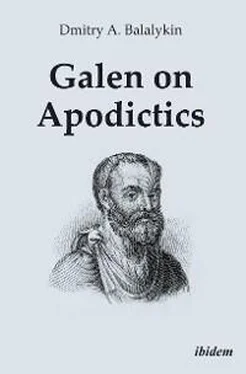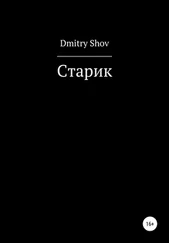Speaking of the history of any given scientific discovery or the establishment of general theoretical ideas in medicine (or physics, for example), I am certainly trying to understand the “anatomy” of the mind of the inquirer, to find out how any given idea came about, the path of the scientific search by a particular scientist. Of course, these questions cannot be answered without the description of the figure of the inquirer himself. Reconstruction of the biography of the scientist, details about his education, information about his family and social surrounding are always the focus of attention of historians of science. Simply put, I am trying to answer for myself the question: “How did he come up with the idea of his discovery?” Thereafter, the following question immediately arises: “Why specifically him (and not someone else) and why at that place and at that time (and not some other time)?”
V.S. Stepin also proposed the term the “world view of the scientist” 21, which considers not only theoretical ideas of any given investigator on the subject of inquiry, but also the need for comprehensive understanding of science as part of the social environment and framework factors which shaped the personality of the scientist.
In the historical development of science, one can identify eras that are characterised by changes in the type of scientific rationality. These types may be associated with above-mentioned three types of the paradigm—classical, nonclassical and post-nonclassical. The criteria of their differentiation are: 1) the peculiarities of the system organisation of objects mastered by science (simple systems, complex self-regulating systems, complex spontaneously developing systems, each of which involves special interpretation of the categorical grid, which facilitates comprehension and study—special meanings of the categories of part and whole, thing and process, causality, space and time); 2) the system of ideals and norms of inquiry inherent to each type of rationality (explanation, description, justification, structure and construction of knowledge); 3) the peculiarity of philosophical and methodological reflection over cognitive activity, which enables to include scientific knowledge in the culture of the corresponding historical era. 22
The Galenic system is a unique phenomenon in the history of natural science. It emerged in the early 3rd century and assumed a dominant position surprisingly quickly. I would like to make a critical methodological observation: the expressions “scientific theory”, “scientific knowledge” do not sound quite appropriate with respect to this time—I am certainly referring to the pre-scientific period of the development of natural science, protoscience. Taking into account this adjustment, which introduces the necessary semantic and notional boundaries, for the sake of convenience, I will employ the concepts of “scientific-practical system” and “theory of rational knowledge” with respect to Galenism.
The triumph of Galenism is a truly unprecedented fact in the history of science. G. Ferngren argues that the Galenic system dominates as early as the mid 3rd century, wittily describing the remaining opponents of Galen as a “post-Galenic sect”. 23V. Nutton takes a more cautious position, pointing to a longer period during which Galenism becomes the universally recognised foundation of medicine—for up to 150 years after the death of Galen. 24Furthermore, V. Nutton draws attention to the strong influence of methodists on the territories of the Western Rome Empire for a long period of time (up to the 5th century). In my opinion, whether it took 50 or 150 years for Galenism to finally triumph is not important. We shall focus on other figures: Galenism remains dominant at least until the 17th century (1500 years) and remains relevant until the early 19th century. After all, it is well-known that K. Kühn’s publication of a corpus of Galen’s works in 1829 was primarily intended for doctors and not historians, and had a practical meaning.
Galen’s natural philosophy is based on opposing judgements: the physical world is not eternal, and was created by a higher being—God (Galen sometimes uses this expression, more often in the Platonic tradition of the word “Demiurge”); creation is based on defined, practical laws of its functioning; there is unity in the act of creation of all living beings. From these positions, Galen is extremely interested in comparative anatomy, where the human being becomes a higher being, the pinnacle of the work of the Demiurge. Galen’s world view allows for obtaining evidence-based knowledge and ultimate understanding of anatomical and physiological processes. His system is distinguished by great openness and internal evolution. The potential for longevity of a scientific paradigm directly depends on its ability to sustain the process of accumulating new knowledge; it is necessary as long as it is able to summarise said knowledge into a system. The preconditions for a scientific revolution arise once a certain critical amount of proven facts that do not fit into the old theoretical system is accumulated. As an example, let us consider the crisis of Galenism in the 17th century: ideas about the hematopoietic function of the liver are refuted by W. Harvey, who discovered the closed blood circulatory system. Facts gathered by W. Harvey, M. Malpighi and others are so clearly substantiated and obviously contradict Galen’s anatomical and physiological system that, naturally, they lead to its criticism and rethinking. In contrast, with all of its significance, A. Vesalius’ work excellently fits in with Galenism.
Considering Galen only as a physician and his legacy solely as a collection of practical anatomical and clinical works, it is impossible to properly assess the figure of the great physician himself and explain the historical fate and significance of his doctrine.
Galen—a Platonist—is guided by the principle which determines the importance of practical knowledge of the living—nature and the human being, supported by rationalist reformists in natural philosophy—Hippocrates and Plato. 25His system of natural philosophy defines the area of scientific and practical search and vice versa. Empirically obtained extensive data refine Galen’s views on natural philosophy. A key place in Galen’s work in natural philosophy is taken by his dispute with epicureans over their views on the nature of matter, according to which matter consists of fine indivisible particles—“atoms” that are in constant motion. Motion was crucial. They considered it chaotic, occurring by happenstance. The controversy over this theory accompanied the development of natural science throughout its prescientific stage until the scientific revolution in the 17th century. From time to time, this dispute escalated and died down. It was exceptionally intense in the 2nd-3rd centuries. For natural philosophers, this theory was absolutely unacceptable as evidenced by its sharp critique from Galen and other natural philosophers. The explanation of the motion of atoms as the chaotic direction of a game of chance essentially meant the lack of any scientific explanation. This directly led to the idea of the unknowability of the physical world, which did not sit well with practical scientists (doctors, physicists, engineers, etc). Successful cognitive work was possible only based on a religious and philosophical system which positively answered the question of the cognisability of nature and the human body as its part.
In this book I try to estimate the exact influence of different philosophical schools on modal theory and practice; to demonstrate this influence on the features of Galen’s scientific-practical system and to analyze Galen’s research methodology, identify the essence of the apodictic method in his works and the structure of his doctrine in the context of commensurability with modern-day medical ideas.
Читать дальше












